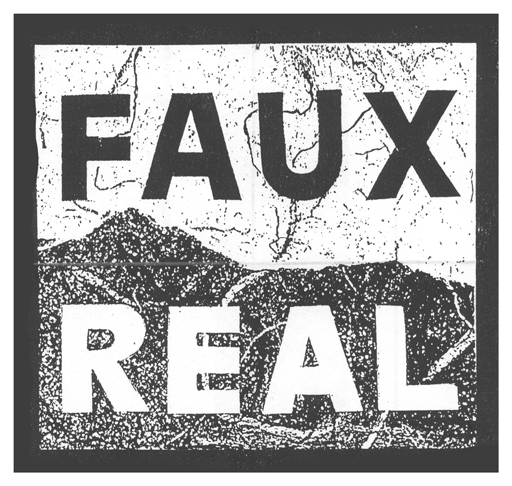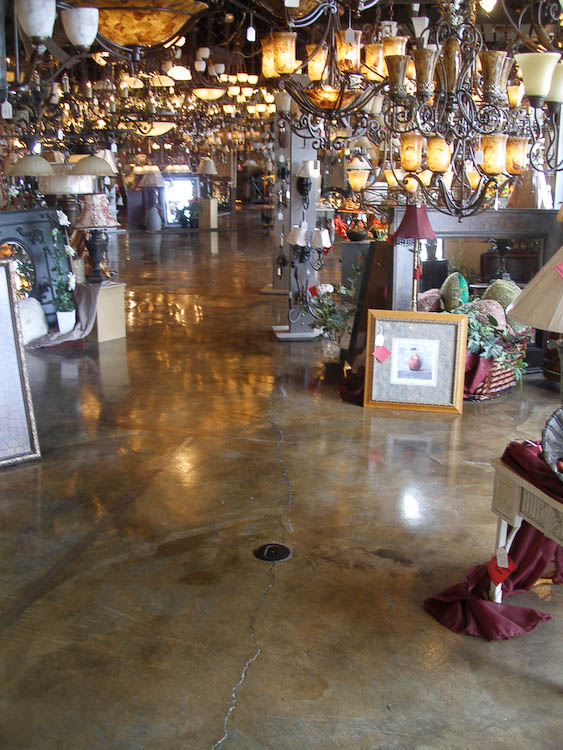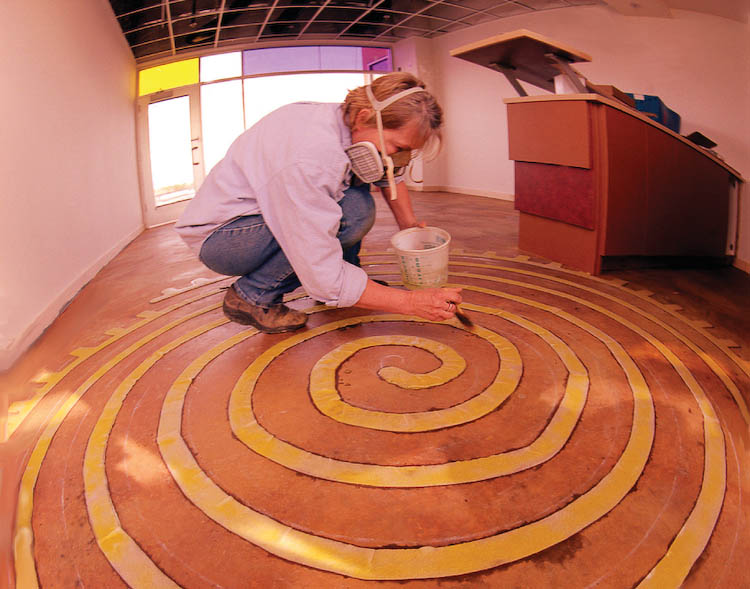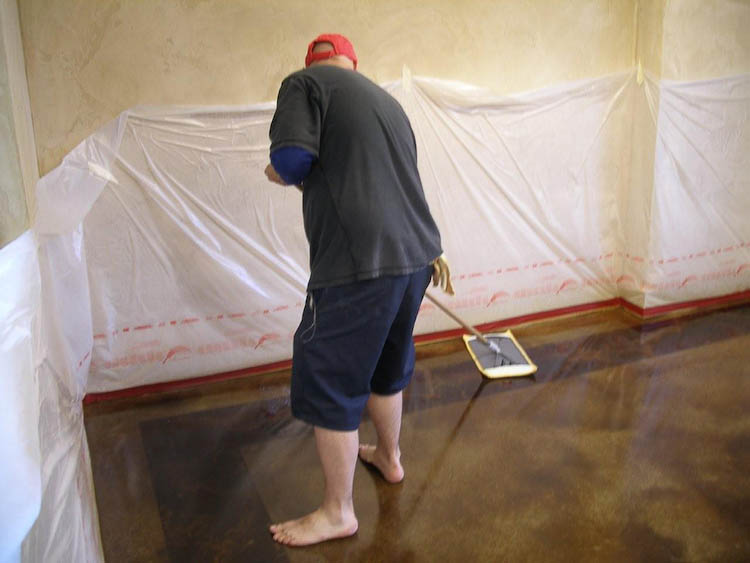We have discovered a great floor stripper which may open up new jobs for you and will certainly make the whole process somewhat easier. My crew really dislikes re-doing other people’s botched floors. However, in the current economy, those are the jobs we are getting and we are only too glad to have them!
One of my favorite custom home builders called me in to see the floors of his own home which he had stained by his house painter before he knew much about acid staining. The painter actually did a fine job on the floor prep and staining, but he was given bad advice on which sealer to purchase. He was sold a “urethane enhanced acrylic” which was meant for wood floors. It looked beautiful for the first few months, but began to flake and peel in the traffic areas for the next nine years. This builder has two active children, a frantic dervish-dog, and an artist wife who paints in one room.
I did some test stripping in a corner of his study. I have found it does not pay to base your stripping estimate on a test done on the flaking areas, so I selected a secluded spot where the sealer appeared completely intact. I thought I was simply dealing with a cheap water-based acrylic. We often use a janitorial wax stripper on these with good success. That did not touch it. Next I tried a strong citrus cleaner, letting it soak for 20 minutes, then scrubbing hard. It only penetrated in a few high spots. When my client put me in touch with the local sales outlet for his sealer and I spoke with them, it was clear they had no idea how to remove it.
I sure didn’t want to turn down this large job, but the client wanted me to remove the impermeable sealer and replace it without removing the stain from the floor, since he was in love with the look of the original. That meant that sanding or removing the cream layer of the slab was not an option. I recalled that my friend and staining colleague, John Rodriguez, had been urging me to try a new low-VOC stripper which he had been using lately. He had provided me with some half-pint sample bottles which I had stashed in my truck and forgotten about.
 I got out the bottle of thick, gooey Newlook Easystrip 1000 and tried mixing it with warm water before applying it to the floor. It did not seem to mix with water at all, so it must be meant to be brushed on full strength. It appears a lot like liquid latex rubber. I spread it on thinly and waited 15 minutes. Voila! It ate right through that tough sealer and darkened the concrete. John told me it could be sprayed on large areas or rolled on with a paint roller. It remains thick and must be scraped up with a wide razor scraper. Once most of the glop is wiped onto old rags, the residue can be scrubbed away with a TSP solution and a black pad on the rotary buffer. (The web address for this product is www.getnewlook.com).
I got out the bottle of thick, gooey Newlook Easystrip 1000 and tried mixing it with warm water before applying it to the floor. It did not seem to mix with water at all, so it must be meant to be brushed on full strength. It appears a lot like liquid latex rubber. I spread it on thinly and waited 15 minutes. Voila! It ate right through that tough sealer and darkened the concrete. John told me it could be sprayed on large areas or rolled on with a paint roller. It remains thick and must be scraped up with a wide razor scraper. Once most of the glop is wiped onto old rags, the residue can be scrubbed away with a TSP solution and a black pad on the rotary buffer. (The web address for this product is www.getnewlook.com).
I bought a five-gallon pail and we set to work on the builder’s house while he took his family on vacation. We soon found that by applying Easystrip 1000 full strength to a dry or even a dampened floor, we were wasting a lot of product which sat on the surface and did not penetrate well. There was a lot of scraping involved and many spots of old sealer remained. It took us four hours to do one bedroom this way.
Remembering that we were working in an extremely dry desert climate, we decided to ignore the instructions and mix the stripper 1:1 withwarm water to increase penetration. Once it was stirred in a bucket, it did not want to mix with the water, but looked like Chinese egg drop soup. We poured this on the floor and spread it out with a rapid circular motion using a Doodle-bug pad and holder. After some brushing the stripper mixed with the water and turned into something which covered the floor evenly with a shaving cream consistency. We let it soak in for 15 minutes and could tell by the even darkening of the floor when it was ready to be removed. We gathered most of it together with a large floor squeegee and wiped it onto rags. A subsequent TSP scrub removed most of the residue, but we did two such scrubs to remove every bit from edges and corners. The second bedroom, done in this manner, took us half as long as the first.




This house had nice white enameled baseboards in every room. We always mask these with three layers of tape when stripping floors. We use a medium-tack tape along the very lowest edge to the floor, then another layer goes on with the masking plastic when we use the masking machine, and finally we try to “waterproof” the lowest edge by putting a band of two-inch colored stucco tape on top. Invariably we find that fluid strippers like citrus cleaner tend to puddle against the walls and creep up under all these layers, holding the stripper against the wall, so the walls get partially stripped also.
I warn my clients in advance that they will probably have to repaint their baseboards. A wonderful side-effect of using a thick stripper like Easystrip 1000 is that it does not flow. Most of the stain color in the floor was also left intact. This might be a fluke. I have never before stripped sealer and had any color left to speak of. When we removed our masking after restaining a few gray spots and doing a post-stain scrub, we found the painted baseboards in pristine condition. That seemed like a small miracle to me!
Finished Floor

Soon after this experience we had another remodel. The clients removed their living-room carpet and wanted us to stain the concrete floor underneath. There were the usual wide bands of carpet pad glue in snaking lines bordering the walls. We were able to get a good portion of the glue off with a citrus cleaner soak. We found that the Easystrip (which is really made for paints and sealers) did not remove glue on the first pass, but after most of it was lifted by means of citrus scrubbing, it worked very well to loosen the remainder of glue which was deep in the pores of the slab. After some wire-brushing on these areas, we removed more carpet pad glue than we had ever been able to do before.
Newlook also makes an Easystrip 2000 which is meant to remove epoxies. We have not tried that yet, and sincerely hope we will not have to.



































































































































































































































































Recent Comments